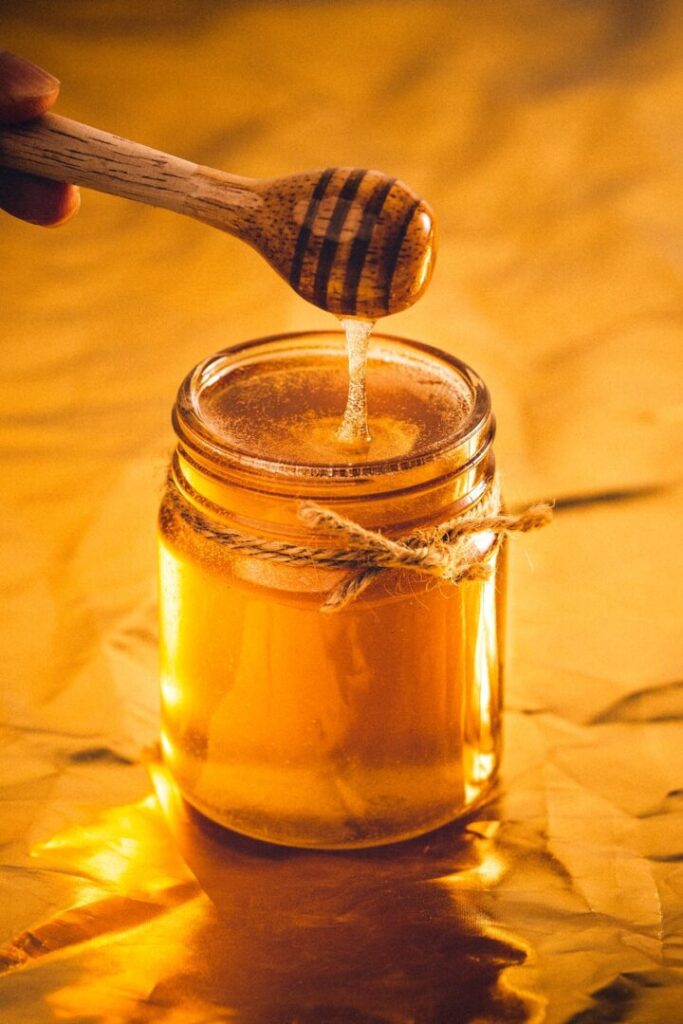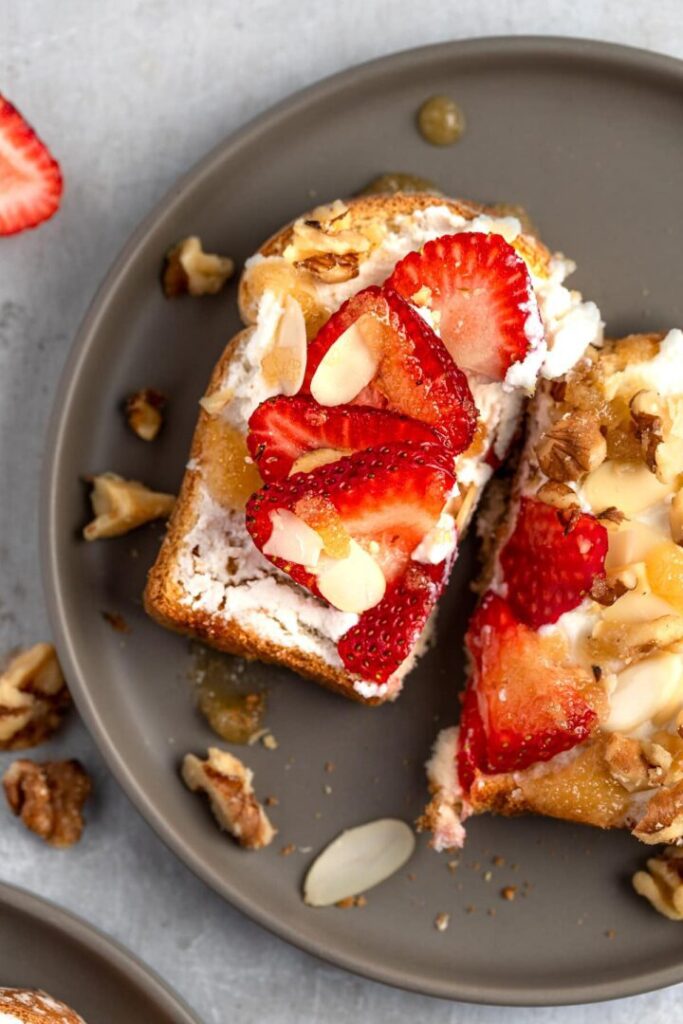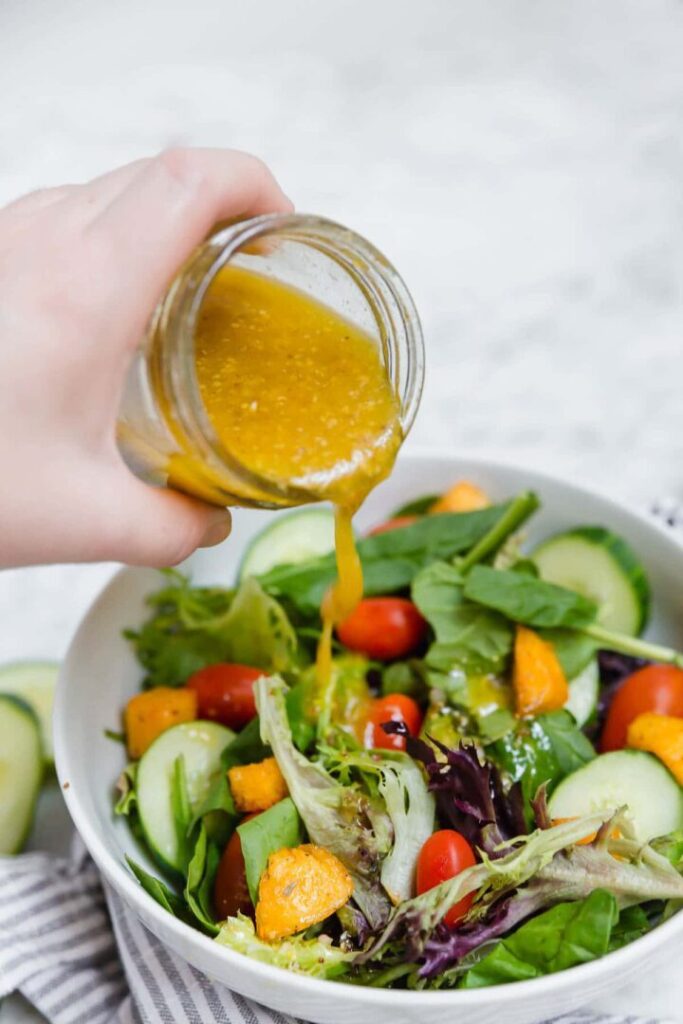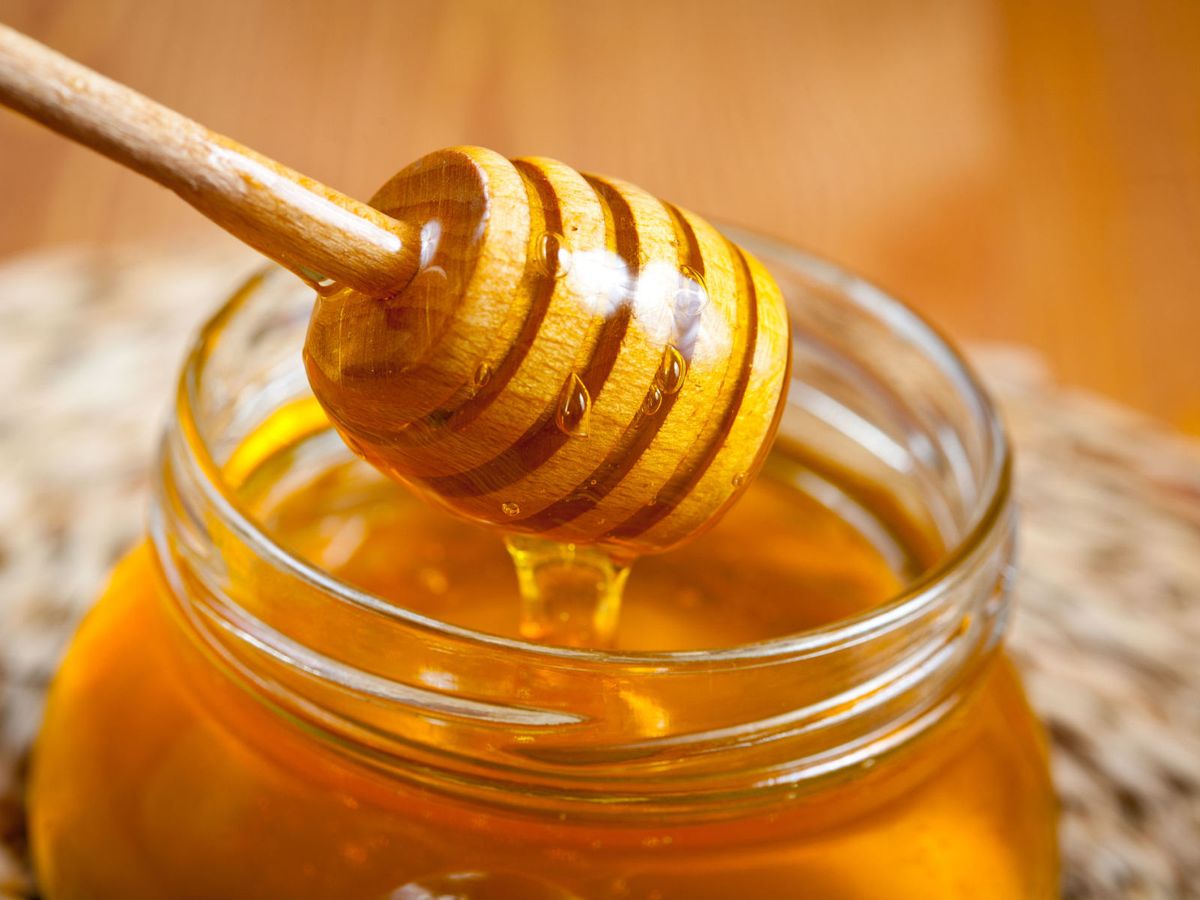Hello Foodie Friends,
September is a month of transition, as summer fades into autumn, and the world prepares for the changing seasons. It’s also the perfect time to celebrate a remarkable natural treasure that has been cherished for centuries – honey. September is officially designated as National Honey Month, a time to honor and appreciate the incredible benefits, rich history, and ecological importance of this golden nectar.
National Honey Month is a time to raise awareness about the vital role that honeybees and other pollinators play in our ecosystem. It’s a moment to celebrate the beekeepers and honey producers who work tirelessly to bring this sweet elixir to our tables. Additionally, it’s an opportunity to educate people about the multifaceted uses of honey, from culinary delights to health and wellness.
Honey is more than just a sweet treat; it’s a true natural wonder. Honey can also be used in various ways, such as in cooking, baking, skincare, and even as a natural remedy for coughs and sore throats. Here are a few key aspects that make honey so unique:
Honey’s versatility in the kitchen is unmatched. It adds a unique and delightful flavor to a wide range of dishes, from desserts to savory recipes. It’s also an excellent natural sweetener for tea and coffee.
Celebrating honey is also a way of acknowledging the vital role honeybees play in pollinating plants, which is crucial for global food production.

The process of bringing honey from the hive to our tables is a fascinating journey that involves the tireless work of honeybees and the dedication of beekeepers.
Honeybees visit flowers to collect nectar and pollen which they store in their honey stomach. In the process, they transfer pollen from one flower to another, facilitating pollination.
Back at the hive, bees regurgitate the nectar into honeycombs, where it is enzymatically transformed into honey.
Beekeepers carefully extract honeycombs from the hives and use centrifugal force or pressing to separate the honey from the comb.
After filtering, honey is bottled and distributed to markets and consumers.
Honey comes in different colors, flavors, and textures, depending on the floral source and the processing method. Some of the common types of honey are:
Clover honey: light-colored and mild-flavored, with a floral aroma. It is one of the most popular and widely available honeys in the US.
Wildflower honey: dark-colored and strong-flavored, with a complex and varied taste. It is made from the nectar of various wildflowers in different regions.
Orange blossom honey: amber-colored and citrus-flavored, with a fresh and fruity scent. It is made from the nectar of orange blossoms in California and Florida.
Buckwheat honey: dark-colored and robust-flavored, with a malty and earthy taste. It is made from the nectar of buckwheat flowers in the northern US and Canada.

Honey can be used in various ways, here are some homemade recipes to use honey:
Toast
Honey on toast is a simple yet delightful treat that combines the warmth and crunch of toast with the sweetness of honey. Here’s a basic recipe to make honey toast at home:

Ingredients:
2 slices of your favorite bread
Honey
Cream cheese (optional)
Strawberrys or your fruit of choice (optional, for extra flavor)
Instructions: Start by toasting the bread. You can use a toaster, toaster oven, or even a stovetop griddle to achieve the level of toastiness you desire. You can choose to toast your bread to a light golden brown or a darker, crunchier consistency, depending on your preference.
If you like, spread a thin layer of butter on the hot toast. The butter adds a rich and creamy element to the sweetness of the honey. This step is entirely optional and depends on your personal taste.
While the toast is still warm, drizzle honey over the top. How much honey you use is entirely up to you. You can lightly drizzle it for a subtle sweetness or be more generous if you have a sweet tooth. Make sure to distribute the honey evenly to cover the entire surface of the toast.
If you’d like to add some extra flavor to your honey toast, you can add some sliced strawberry cover the honey. This will give your honey toast a delightful aroma and an extra layer of taste.
Your honey toast is now ready to be served! Enjoy it while it’s warm, as the honey will slightly melt into the bread, creating a harmonious blend of textures and flavors.
Salad
A salad with honey dressing can be a delicious and healthy addition to your meal. Here’s a simple recipe for a Honey Mustard Vinaigrette dressing to complement a mixed green salad:

Ingredients for the Honey Mustard Vinaigrette:
3 tablespoons olive oil
1 tablespoon apple cider vinegar
1 tablespoon Dijon mustard
1 1/2 tablespoons honey
1 small clove of garlic, minced (optional)
Salt and black pepper to taste.
Ingredients for the Salad:
Mixed greens (of your choice)
Cherry tomatoes
Cucumber, sliced
Red onion, thinly sliced (optional)
Carrots, thinly sliced or grated
Croutons (optional, for added crunch)
Grated Parmesan (optional)
Instructions for the Honey Mustard Vinaigrette: In a small bowl, whisk together the Dijon mustard, honey, and vinegar until well combined.
Slowly drizzle in the olive oil while whisking continuously to emulsify the dressing. This means that the oil and vinegar will blend together into a smooth, cohesive mixture. Add the minced garlic (if using) and whisk it into the dressing.
Season the dressing with salt and freshly ground black pepper to taste. Adjust the honey or vinegar to achieve the desired balance of sweetness and acidity. Set the dressing aside.
Instructions for the Salad: In a large salad bowl, combine the mixed greens, cherry tomatoes, cucumber, red onion (if using), and carrots. Toss everything together to evenly distribute the ingredients.
If you’re using croutons and cheese, add them to the salad at this stage.
Drizzle the Honey Mustard Vinaigrette dressing over the salad. Start with a small amount and add more as needed, depending on your taste preferences. Toss the salad gently to ensure that the dressing coats all the ingredients evenly. Serve the salad immediately as a side dish or add some protein like grilled chicken or tofu for a complete meal.
Honey Garlic Chicken
Honey can be a fantastic addition to a dinner dish, providing both sweetness and depth of flavor. Here’s a recipe for Honey Garlic Chicken, a delectable lunch option that’s easy to prepare:

Ingredient for the Chicken:
4 boneless, skinless chicken breasts
Salt and black pepper to taste
2 tablespoons olive oil
2 tablespoons butter
Ingredients for the Honey Garlic Sauce:
1/4 cup honey
3 tablespoons soy sauce
2 cloves garlic, minced
1 teaspoon fresh ginger, minced (optional)
1/2 teaspoon red pepper flakes (adjust to your spice preference)
Chopped green onions for garnish
Instructions for the Chicken: Season the chicken breasts with salt and black pepper on both sides.
Heat the olive oil and butter in a large skillet over medium-high heat. Add the chicken breasts to the skillet and cook for about 4-5 minutes on each side or until they are golden brown and cooked through. The internal temperature should reach 165°F (75°C). Cooking time may vary depending on the thickness of the chicken. Once the chicken is cooked, remove it from the skillet and set it aside.
Instructions for the Honey Garlic Sauce: In the same skillet, add the minced garlic and ginger (if using). Sauté them for about 1-2 minutes until fragrant. Add the honey, soy sauce, and red pepper flakes to the skillet. Stir the mixture well to combine. Let the sauce simmer for about 2-3 minutes until it thickens slightly and becomes glossy.
Return the cooked chicken to the skillet, turning each piece to coat them with the honey garlic sauce. Cook for an additional 2-3 minutes to heat the chicken through. Garnish with chopped green onions (if desired).
Serve the Honey Garlic Chicken hot over rice, quinoa, or with your choice of side dishes. Drizzle extra sauce over the chicken before serving. This Honey Garlic Chicken it’s a great balance of sweet and savory flavors. Enjoy your homemade lunch with a touch of honey!
Honey Lemon Ginger Tea

Ingredients:
1 cup of water
1 tea bag (black, green, or herbal tea of your choice)
1-2 slices of fresh ginger
1-2 tablespoons of honey (adjust to your preferred sweetness)
1 lemon slice (optional)
A cinnamon stick (optional, for added flavor)
Instructions: Start by boiling a cup of water. You can use a kettle, microwave, or stovetop.
Place the tea bag in a cup or mug. Pour the boiling water over the tea bag and let it steep for the recommended time, as per the tea type. This is typically 2-5 minutes, depending on the type of tea.
While the tea is steeping, add the fresh ginger slices to the cup. Ginger adds a wonderful, spicy warmth to the tea and is also known for its health benefits. Once the tea has steeped, add honey to the cup. Start with 1-2 tablespoons and adjust the amount to your desired level of sweetness.
If you like, you can squeeze a slice of lemon into the tea for a citrusy zing. For an extra layer of flavor, add a cinnamon stick to the cup. The cinnamon complements the honey and ginger beautifully.
Stir the tea thoroughly to ensure the honey dissolves and blends with the other ingredients. Remove the tea bag and ginger slices if you prefer a smoother drink. This homemade tea with honey is not only delicious but also a great way to soothe a sore throat or provide warmth and comfort on a chilly day. Adjust the ingredients to your taste, and feel free to explore different tea varieties to find your perfect combination.

National Honey Month is a time to savor the rich history, remarkable qualities, and delicious flavors of honey. It’s also an opportunity to recognize the importance of honeybees and other pollinators in our ecosystem. As you celebrate this month, consider incorporating honey into your culinary creations, supporting local beekeepers, and taking steps to protect these invaluable insects. By doing so, you are not only enjoying a delectable treat but also contributing to the conservation of a vital part of our natural world. Happy National Honey Month!
Until we eat (and drink) again…
I send you Delicious Wishes, xo
Denise





3 Responses
Ive read several just right stuff here Certainly price bookmarking for revisiting I wonder how a lot effort you place to create this kind of great informative website
Simply wish to say your article is as amazing The clearness in your post is just nice and i could assume youre an expert on this subject Well with your permission let me to grab your feed to keep updated with forthcoming post Thanks a million and please carry on the gratifying work
Thank you for your comment. We are glad you appreciate our content. We publish around 8 blogs a month. Be sure to sign up to receive our monthly e-newsletters so you are notified when we have new blog posts updated to our site.